In my Post Esquites, Tequesquite and a Witches Curse. I bring up the figure Tlazocihualpilli.
Tlazocihualpilli was a Xochimilca who was the Tlatoani of the altepetl (1) of Xochimilco between the Years 12 Reed and 11 Reed (1335 – 1347). She is a semi-mythical being who, apart from being the ONLY female tlatoani to have ruled Xochimilco, and one of very few women to have held such high position during the time of Aztec rule (2), she is said to have been responsible for the creation of dishes such as necuatolli (3), capultamalli (4), tonalchilli (5), atole with honey, and tlapiques (6). Tlazocihuapilli is also said to have created the first tamale leaf wrappers and also to have invented a dish made with vermin from the canals and lakes, adding wild quelites from the chinampas. This dish is called Mixmole or Michmole (Michmulli) which means fish stew, which is currently prepared with chard, axolotl and fish, as well as acociles and frogs.
- The tlatoani is the equivalent of the ruler/king of the altepetl which roughly translates to “city-state”
- The Mexica held sway in the Valley between (approx) 1300 – 1520. In the “Anales de Culhuacan” it is recorded that in the year 12 Acatl (12 Reed – 1335) Cuauhtiquetzal, the Tlatoani of Xochimilco dies and Tlazocihualpilli is enthroned and that she is the only recorded female Xochimilca ruler. In the year 11 Acatl (11 Reed – 1347) Tlazocihuapilli “leaves power” after 12 years on the throne and Caxtotzin is enthroned as tlatoani of Xochimilco (López & de la Cruz 2007).
- Necuatolli – Nicuatole (Nahuatl necutli , ‘honey’, and atolli , ‘atole’) is a gelatinous dessert typical of Oaxaca , Mexico , and is made with corn, sugar, cinnamon and water. Instead of sugar, it can also be sweetened with piloncillo , and on top it is usually coloured with carmine red , a pigment obtained from cochineal. Nocheztli : The Cochineal Beetle
- Capultamalli are fruit tamales made with capulín black cherries or chokecherries (Prunus serotina or P. salicifolia), from Náhuatl capolcuahuitl, a compound of capolin ‘cherry’ and cuahuitl ‘tree’
- aside from a specific chile having this name the closest thing I could find was dish made of guero chiles cooked in a tomato sauce.
- Vitamina T : The Tlapique. Cousin of the Tamal.
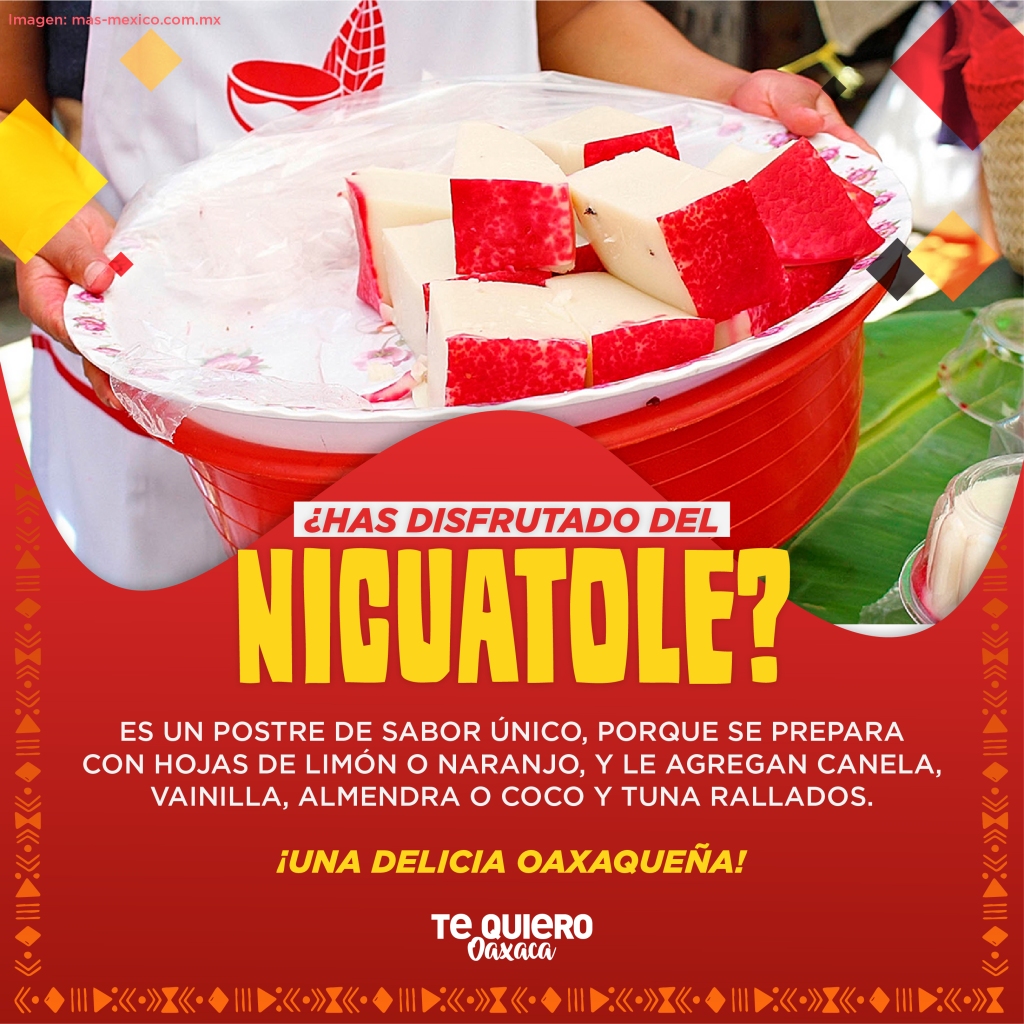
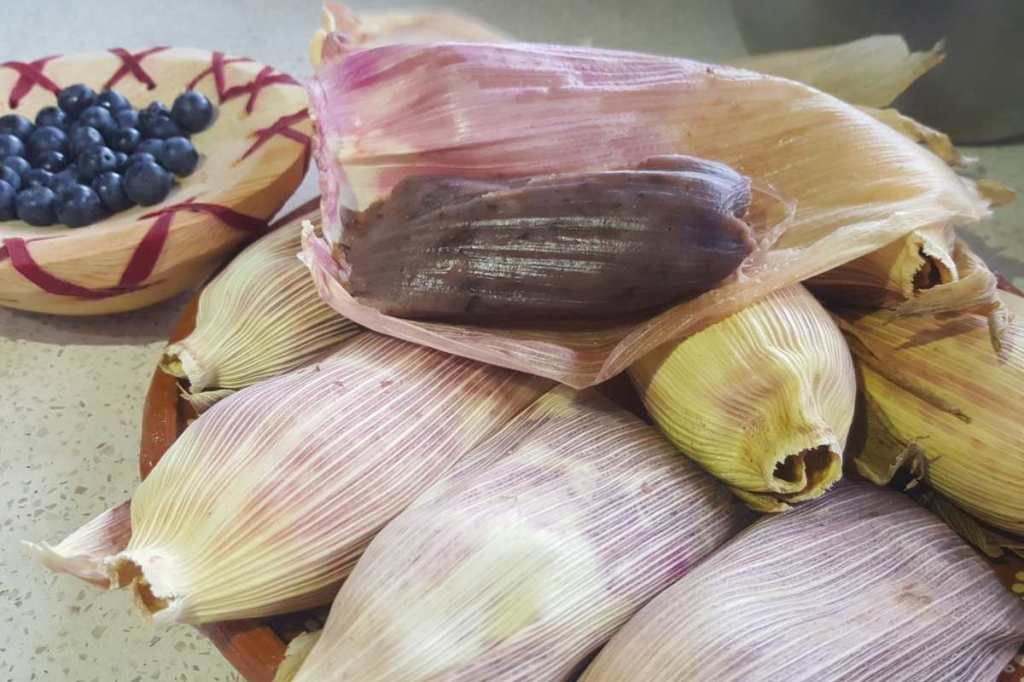
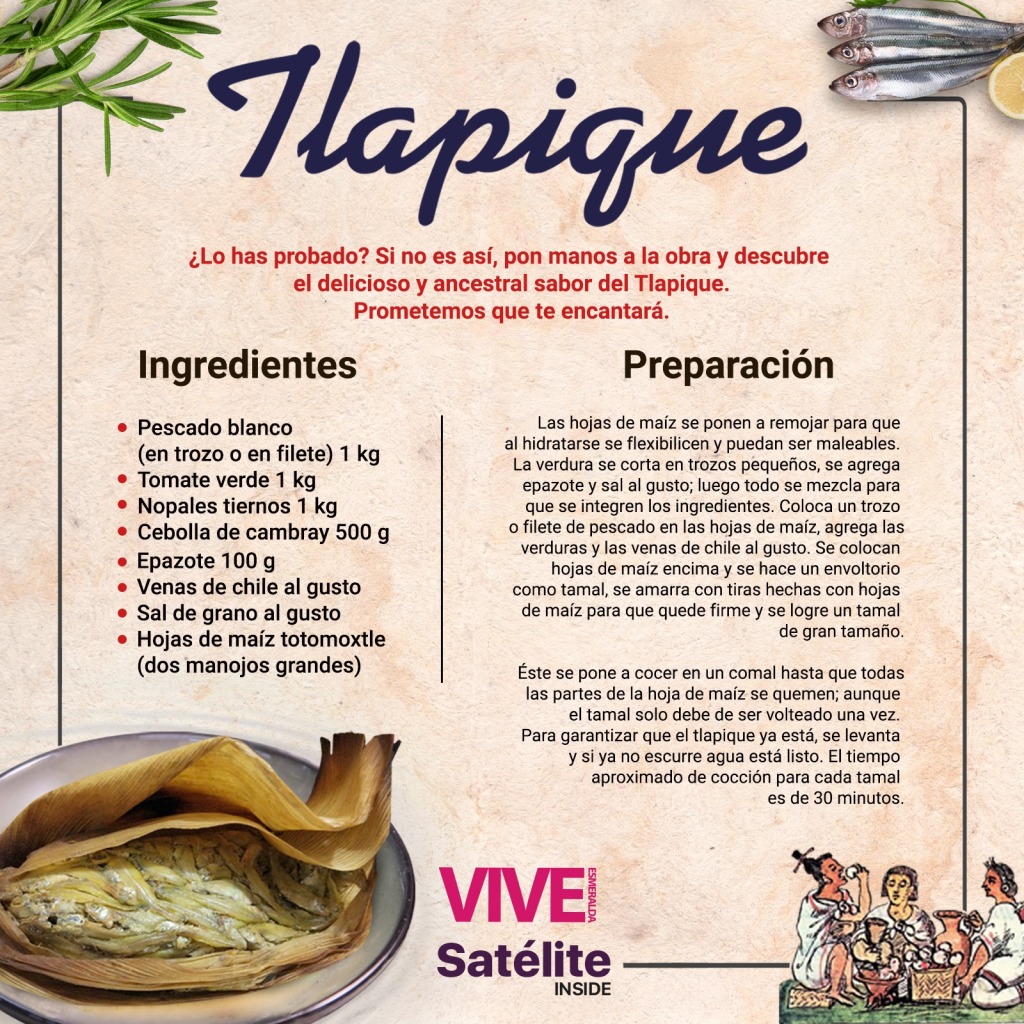
Today we’ll look at the michmulli
Michmole , michimole , mixmole (from Nahuatl : michi , “fish”; mulli , ” sauce “) or mole de pescado is a typical stew from Mexico City, Edoméx (1) and Michoacán. Today the main ingredient for this dish is fish , which is fried and then finished in a salsa verde made from garlic, onion, chile , epazote and tomate verde (tomatillo). In the prehispanic era this was one way of preparing the bounty of fish harvested from Texcoco and other lakes. These lake dwelling peoples consumed everything they could find living in the lakes including frogs, atepocates (2), ajolotes (3) and acociles (4).
Today this dish is no longer prepared with ajolotes because they are endangered. The dish is often accompanied by nopalitos
- The State of Mexico, officially just Mexico, is one of the 32 federal entities of the United Mexican States (Estados Unidos Mexicanos). Commonly known as Edomex to distinguish it from the name of the whole country
- tadpoles – you might also find the word “renacuajo” used
- the axolotl
- a small freshwater crawdad
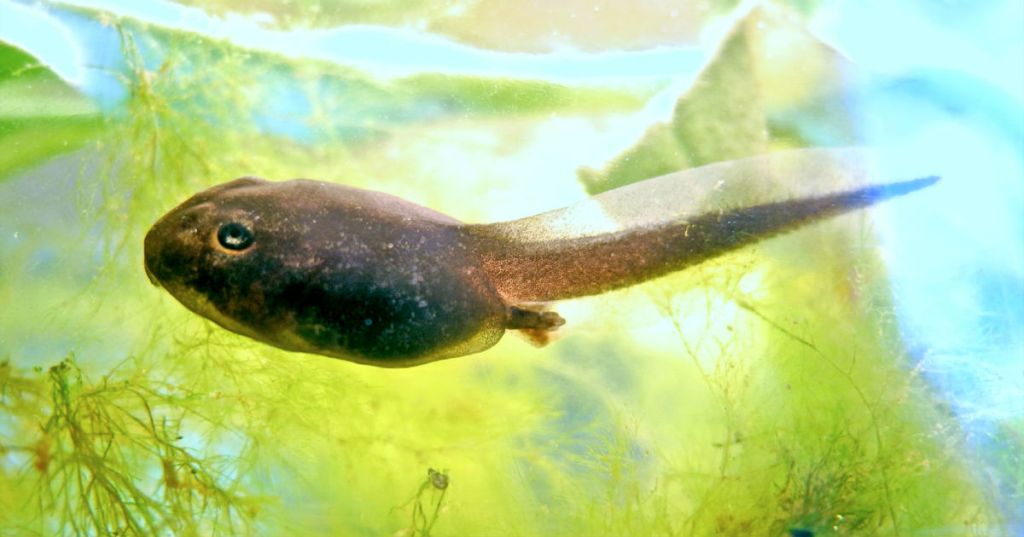
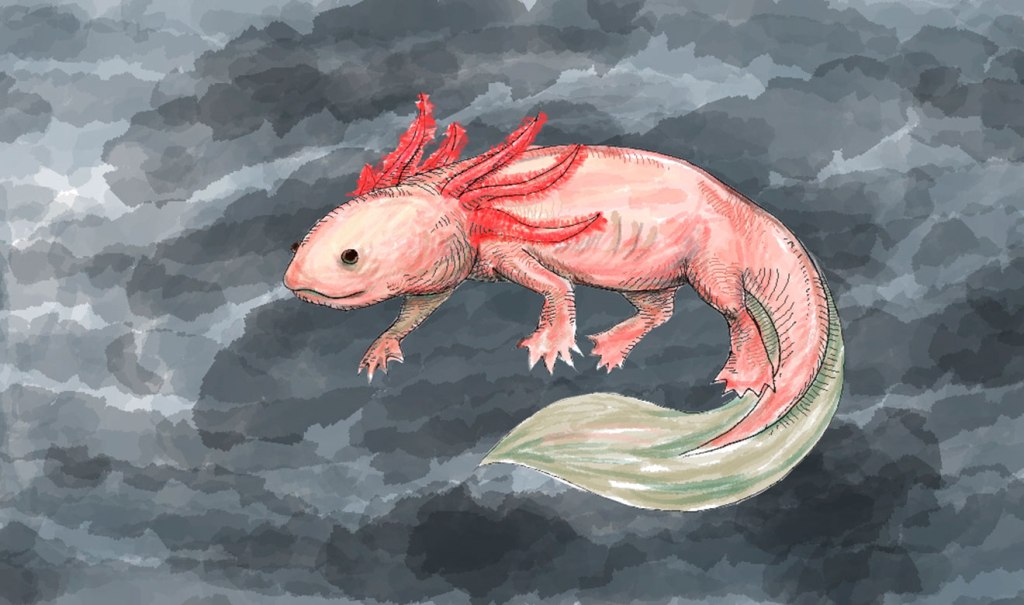
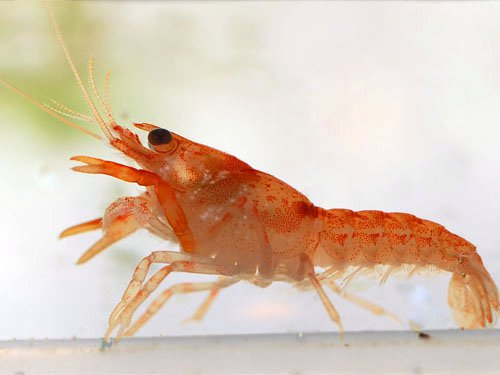
Food in the lacustrine (1) environment of Culhuacan
- of, relating to, formed in, living in, or growing in lakes
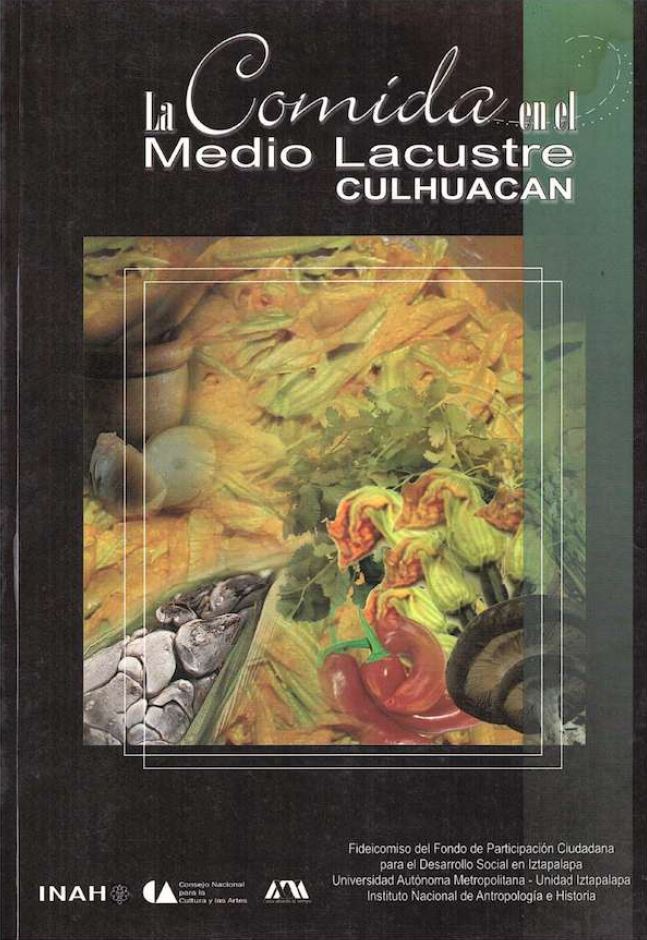

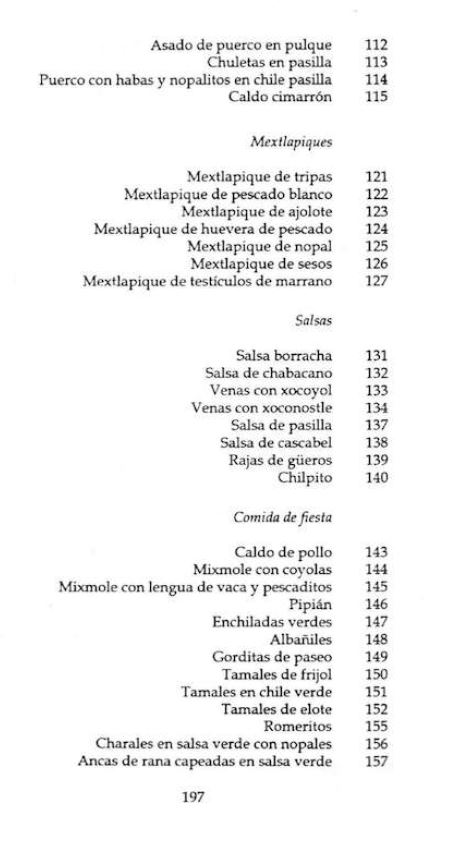
From wild herbs to tadpoles these guys ate everything. Check out some of the ingredients……chapulines (grasshoppers), ancas de rana (frog legs), huitlacoche (corn fungus)….gusanos de maguey (well we all know about Mexicans and their agave ‘worms” so that ones no big surprise)…..so far so good I guess….now things get wild…..tlacuache (possum), culebra de cascabel (O.K….that ones a rattlesnake), zorillo (Lordy, that ones a skunk).
This book contains a recipe for Mixmole con coyolas (which I’ll look at in a bit) but lets look at this dish, where it comes from, and how we might enjoy it ourselves.
In the Congreso de la Ciudad de México (22 de enero de 2021) a motion was put forward to have michmole (and several other dishes) evaluated so as to be listed as part of the Cultural, Natural and Biocultural Heritage of Mexico as being representative of the region of Tlahuac (1)
- Tláhuac is a borough in the Mexico City, located in the south-eastern edge of the entity. Tláhuac still contains rural communities within its borders, mostly in the southern and eastern portions.


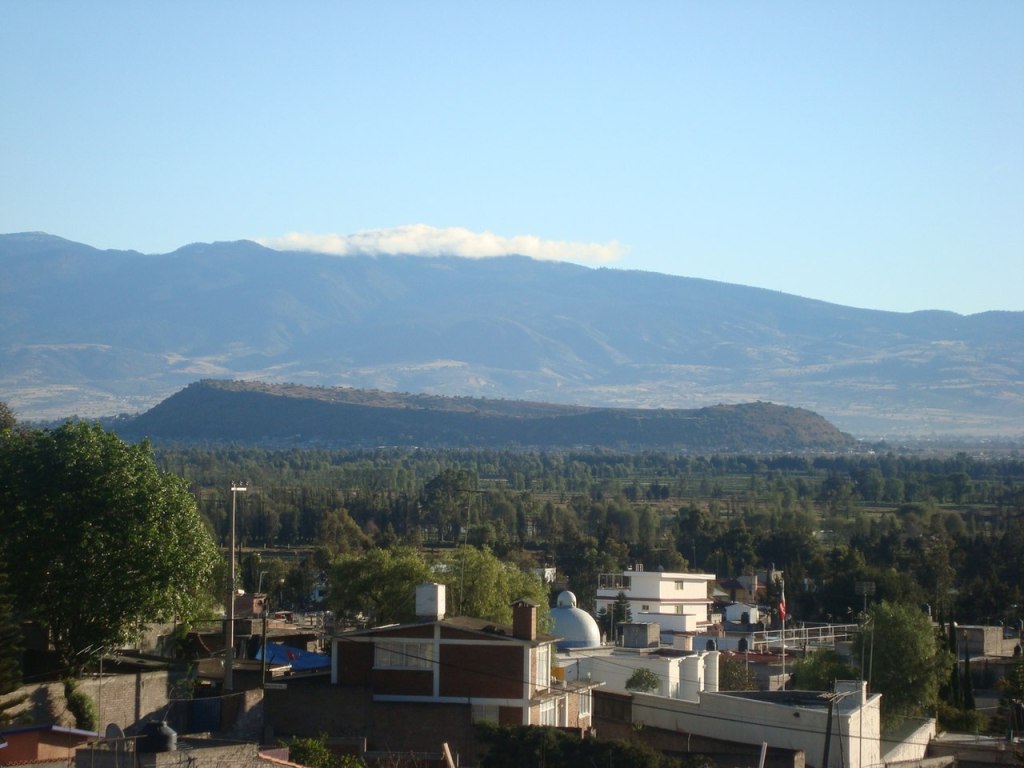
The dish is described as “an inheritance from the Nahuatlaca peoples who settled on the shores of Lake Chalco and Xochimilco.” Point 25 of the motion states “Michmole” is part of the gastronomic heritage of Tláhuac and mainly of the town of San Andrés Mixquic. “Michimolli” comes from “michin”, which means fish and “molli” (1), stewed. It is prepared mainly at parties such as XV years (quinceanera?), baptisms and weddings, and it is customary to serve it on “la correteada”, which corresponds to the last day of the party. Since celebrations in the town last more than a day, this is a polite way of indicating to guests that no more food or drink will be served. It is also customary to offer it nine days after a death, during the patron saint’s day of Saint Andrew the Apostle and the last day of the Jubilee.”
- the word mulli/molli is described in this context as “stewed” when translated (the Spanish word used is “guisado”). Now this word (mulli) typically refers to something ground (as in a sauce ground in a molcajete) and is often quoted as being the root for the word “mole” which is of course a complex “sauce” made from a variety of ground ingredients. Check out What is Mole? for more info….and if you’re keen to delve into the wild herbs a little more Quelites y Mole.
Lets look at the etymology on this one….
michmulli
Classical Nahuatl
Noun – michmulli (inanimate)
Obsolete spelling of michmōlli………..
..……michmolli
Classical Nahuatl
Alternative forms : michmulli (obsolete spelling)
Etymology : From michin (“fish”) + mōlli (“stew”).
Noun – michmōlli (inanimate) – A stew or potage made from fish.
Lets check another source (or is that sauce?). Just being thorough
michmolli.
Principal English Translation: a fish stew (or stew, fish stew, fish delicacy)
Orthographic Variants: michmulli
Alonso de Molina: michmulli. guisado, o potaje de pescado.
….and, of course, the root words….
molli.
Principal English Translation: sauce, something ground
Frances Karttunen: MŌL-LI sauce, broth, gravy, mole / salsa, guiso, potaje (S), mole (T) See MŌLA.
michin.
Principal English Translation: fish (Lockhart 2001)
Alonso de Molina: michin. pescado.
Frances Karttunen: MICH-IN pl: MĪMICHTIN fish / pescado
Now. Let’s check out a recipe
Mixmole. (Fish mole, Michmole, Michimolli).
Serves 5 to 7
Adapted from a recipe by Chef Jorge L. Álvarez V.
(a close collaborator of Fundación Herdez – https://fundacionherdez.com/quienes-somos/. For a little more on this organisation check out my Post Books along the way)
The protein:
- 1 ½ kg fish fillets, catfish, trout or mojarra. (skin on).

They are part of the cichlid family
For the salsa verde :
- 6 serrano chiles or 2 cuaresmeños (approx 100g)
- 10 large(ish) tomate verde (tomatillos) about 350g
- ½ small white onion, sliced. (60g).
- 1 clove of garlic (10g).
- 40g lightly toasted pumpkin seeds.
- 40g of masa (tortilla dough)
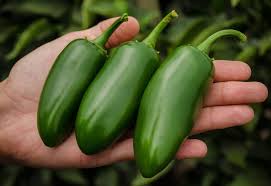
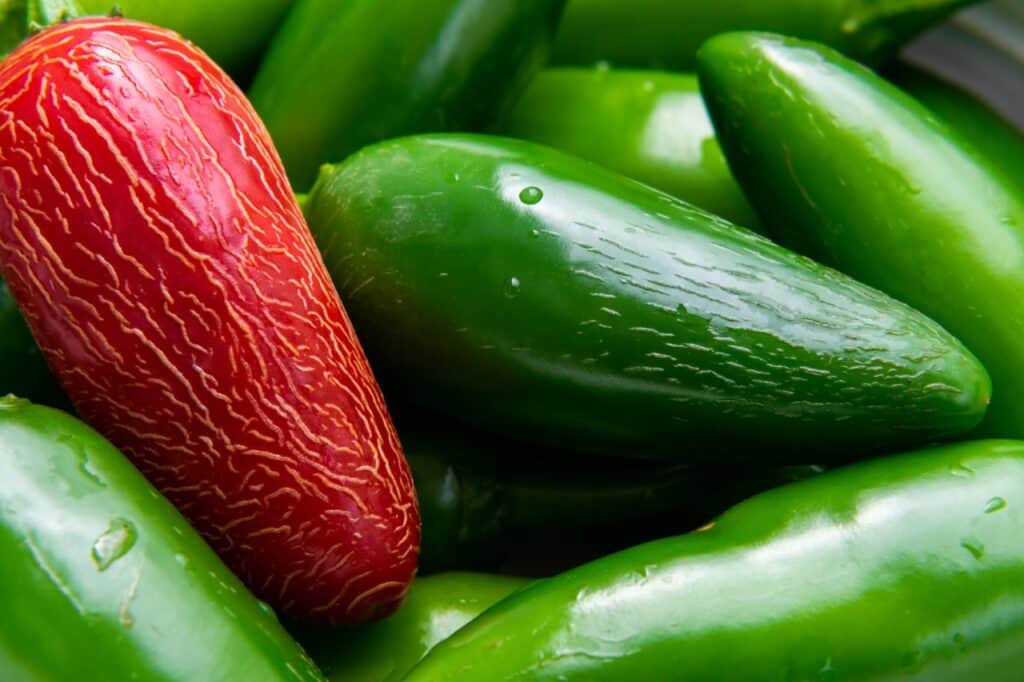
The Cuaresmeño Chile
The name Cuaresmeño comes from the central regions of Mexico, because in places like Puebla, this type of chili was prepared stuffed with cheese or tuna during Lent (1), the days before Holy Week in which the Catholic religion prohibits eating meat. This chile is simply a jalapeno chile that has been affected by a growing condition called “corking”(2)
- Lent is a Christian (of the Catholic Church in particular) religious observance consisting of a 40 day season of prayer, fasting, and almsgiving that begins on Ash Wednesday and ends at sundown on Holy Thursday. This is done to commemorate the 40 days Jesus Christ spent fasting in the desert and enduring temptation by Satan before beginning his public ministry. It’s a period of preparation to celebrate the Lord’s Resurrection at Easter. While most Catholics are familiar with “no meat on Fridays” during Lent, fasting and abstinence are important components throughout the period.
- Corking is when the inside of the chile is growing faster than the outside, creating a cracked, cork-like texture on the skin. It is also referred to as cracking, checking, scarring, or even stretch marks. While corking is most common amongst Jalapenos, it can happen to just about any chile. It is usually induced by excess watering, nutrients, and sun during the pod development stages. Corked peppers are said to be sweeter, and hotter than their uncorked siblings. This is considered by others to be a myth, and that corking has no effect on either the Capsaicin content (responsible for the heat of the chile) or flavour. In American (United States of) markets, pepper corking is seen as a blemish, but in Mexico, South, and Central America, corking is a sign of quality, usually fetching higher prices at local markets.
Fry with butter
- Butter (or ghee)(as needed). Lard or vegetable oil could be used (butter tastes better though)
- 6 cilantro sprigs (ramas – branches with leaves) (40g). Remove leaves and wash.
- 2 sprigs of epazote with leaves (50g). Remove leaves and wash.
- ½ sliced white onion (60g).
Add to the sauce :
- 200g of lengua de vaca, washed and cut into pieces. (This plant is a quelite) or you can substitute 200g of chard, spinach, or verdolagas (purslane). Quelite : Verdolagas : Purslane.
- 4 nopales cooked and cut into squares (400g)
- 25g dried charales.
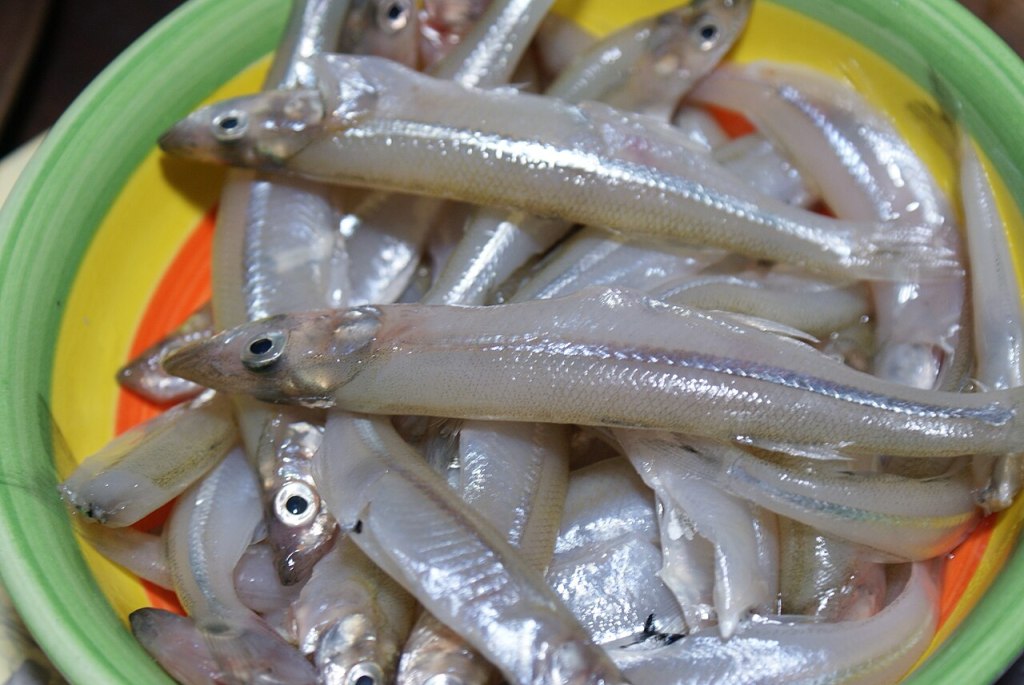


Preparation :
- Preferably you are cooking this recipe with fish you have caught and filleted yourself. Using the bones and scraps of the fish left over after filleting place them in a pan with 1 1/2 litres of room temperature water (never start a stock with hot water), a pinch of salt and a sprig of epazote. bring to the boil and simmer for 20 minutes. take off the heat, allow to cool and strain out the bones. This is your fish stock which we’ll use to finish off our sauce.
- If using only pre-prepared fillets (which you purchased at your local fishmonger) cut them into serving sized portions and poach in water seasoned with a little salt and a sprig of epazote, then set aside. Strain the liquid and set aside. When cooled, fry the fillets (skin side down) in a pan with a little butter, salt and black pepper and grill over low heat until cooked, set aside until ready to serve. This frying step can be avoided if you want. Frying it will however give the skin a nice crunchy texture, slightly altering the flavour profile, and will add depth to the dish
- Blend together (or grind in your molcajete for a more authentic texture) the chile, tomato, garlic, onion, pumpkin seed, and the masa. Thin this down with 3 cups of stock.
- In a frying pan sauté sliced onion, epazote, and cilantro in a little butter, over low heat. And add the salsa from the previous step. Bring to a boil. Allow the liquid to thicken almost to the desired texture (the last 5 minutes of cooking time will finish it off). If the sauce thickens too much, add a little more fish stock.
- To finish the dish, add, the dried charales (if using – you could also add fresh charales at this point too as they will only take a few minutes to cook from raw), the nopales, the chopped quelites (or chard/spinach) and the pre-cooked fish. Let it simmer for about 5 minutes. Add the fish (in any of its two forms) towards the end of cooking time, this will prevent the fillets (or charales) from falling apart in the sauce.
- Serve with hot freshly made tortillas.
This dish can be presented in a number of ways. You can thin your salsa down to almost a soup or keep it as thick as a mole.
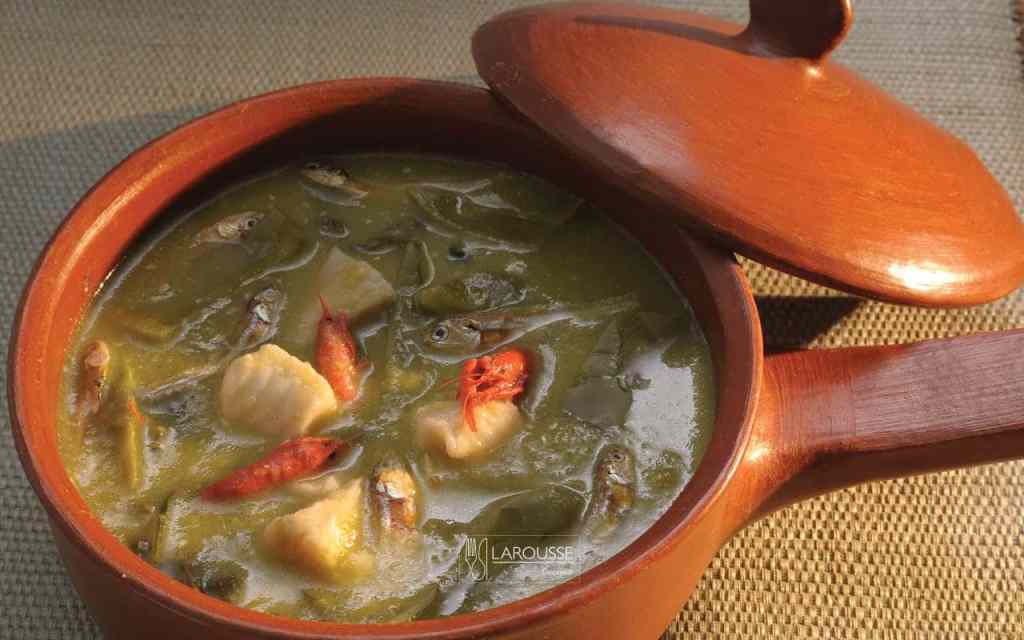

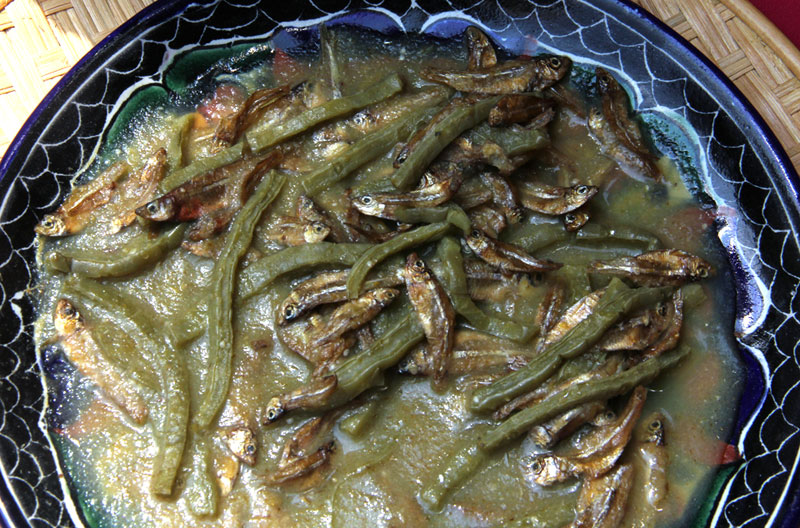
Now I mentioned a mixmole recipe earlier that came from the lake dwellers of Culhuacan. lets check it out
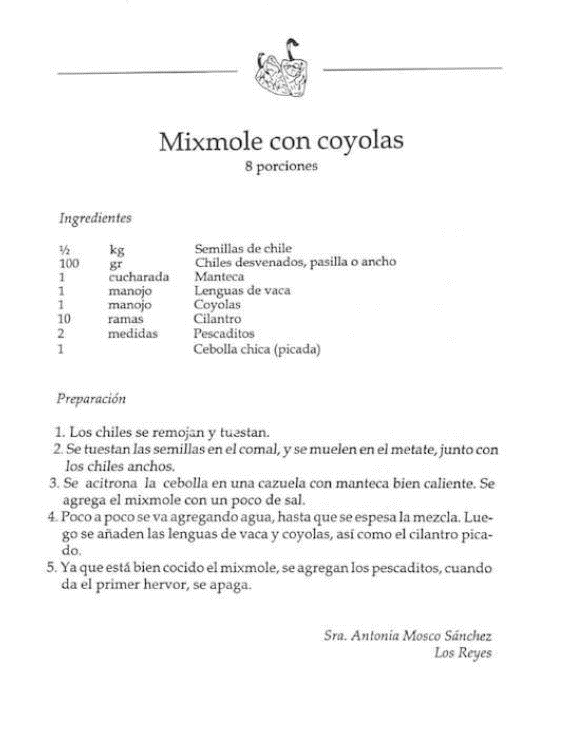
Coyolas?
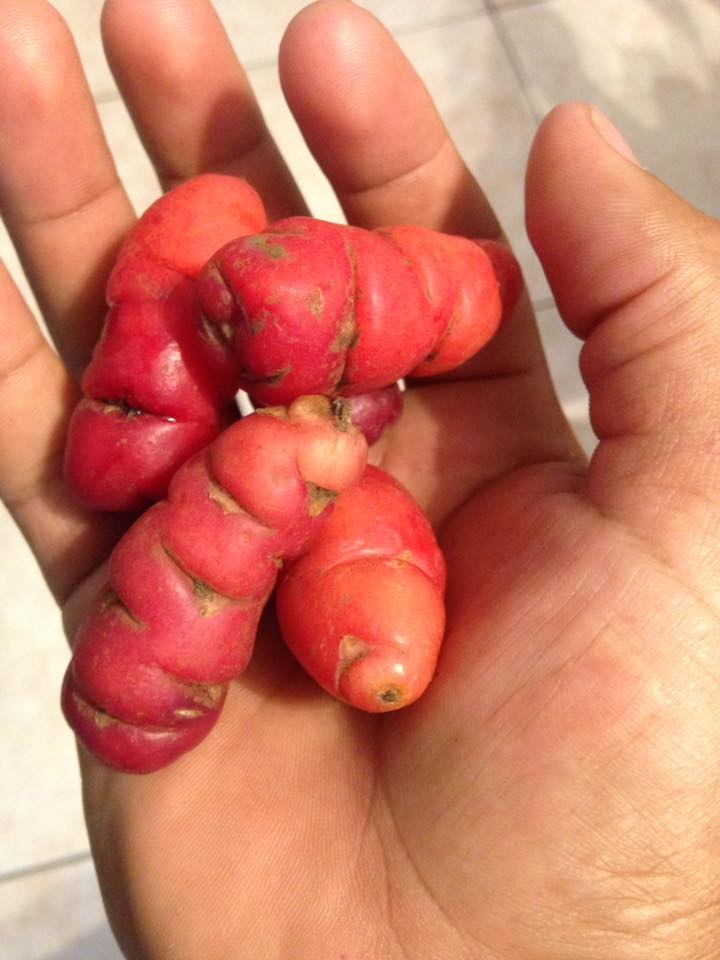
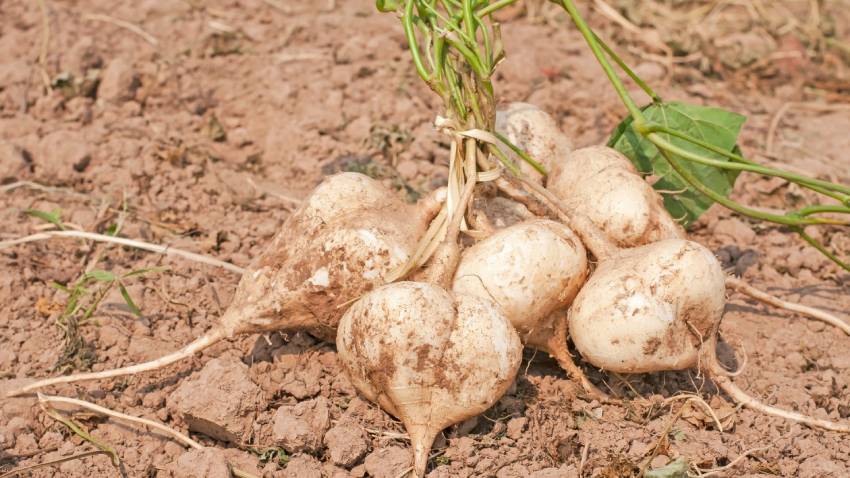
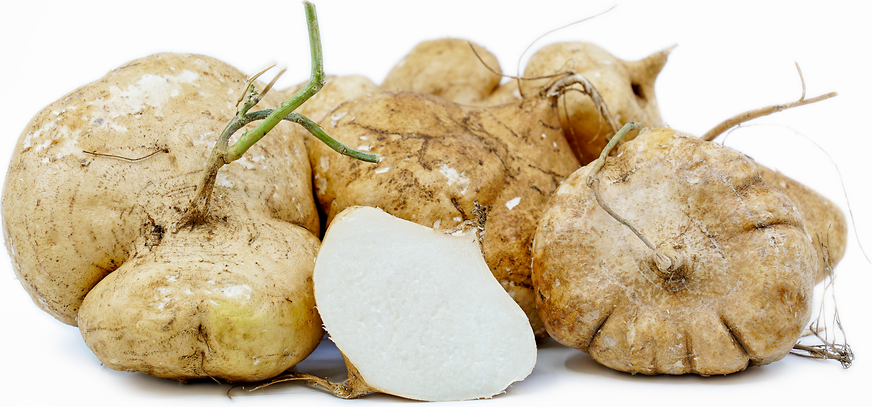
Now I’m not entirely sure this is the vegetable being used. You are asked for a “manojo” of coyoles which can either mean a “handful” (like the root vegetable above) or it can also refer to a “bunch” which would not accurately represent the root vegetable but might represent the following…….
Coyol – Coyoles
This fruit comes from the palm tree Acrocomia aculeata which is widely distributed in Mexico and Central America. It is known as a coyol in Chiapas, where people make use of its sap, flowers, fruits, and bud or heart. The tree grows up to 15–20 m tall, with a trunk up to 50 cm in diameter, characterized by numerous slender, black, viciously sharp 10 cm long spines jutting out from the trunk. The fruit is a yellowish-green drupe (1) 2.5–5 cm in diameter. The inner fruit shell is very tough to break and contains (usually) one single, dark brown, nut like seed 1-2 cm in diameter. The inside of the seed is a dry white filling that has a vaguely sweet taste like coconut when eaten. The fruit turns yellow when ripe and has a hard outer shell. The pulp is slightly sweet and is extremely slimy and sticky.
- a drupe is a fleshy fruit with thin skin and a central stone containing the seed, e.g. a plum, cherry, almond, or olive.
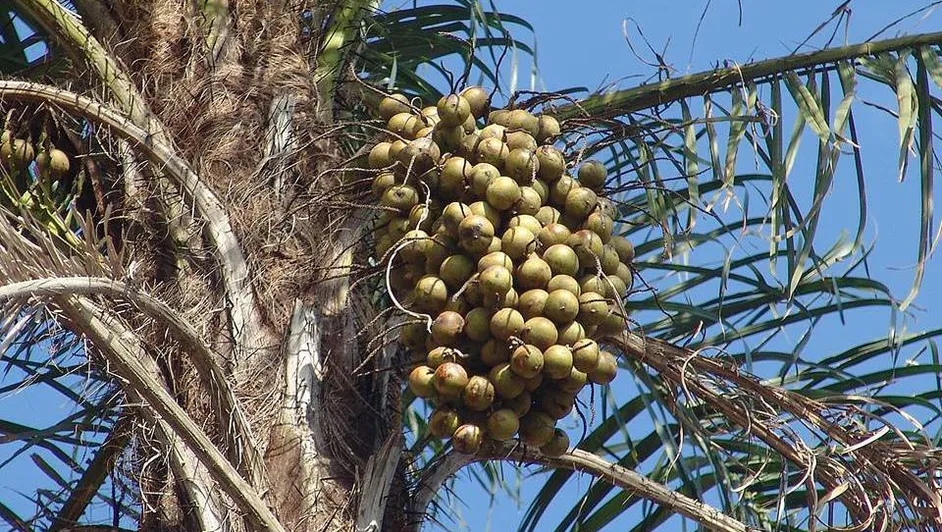
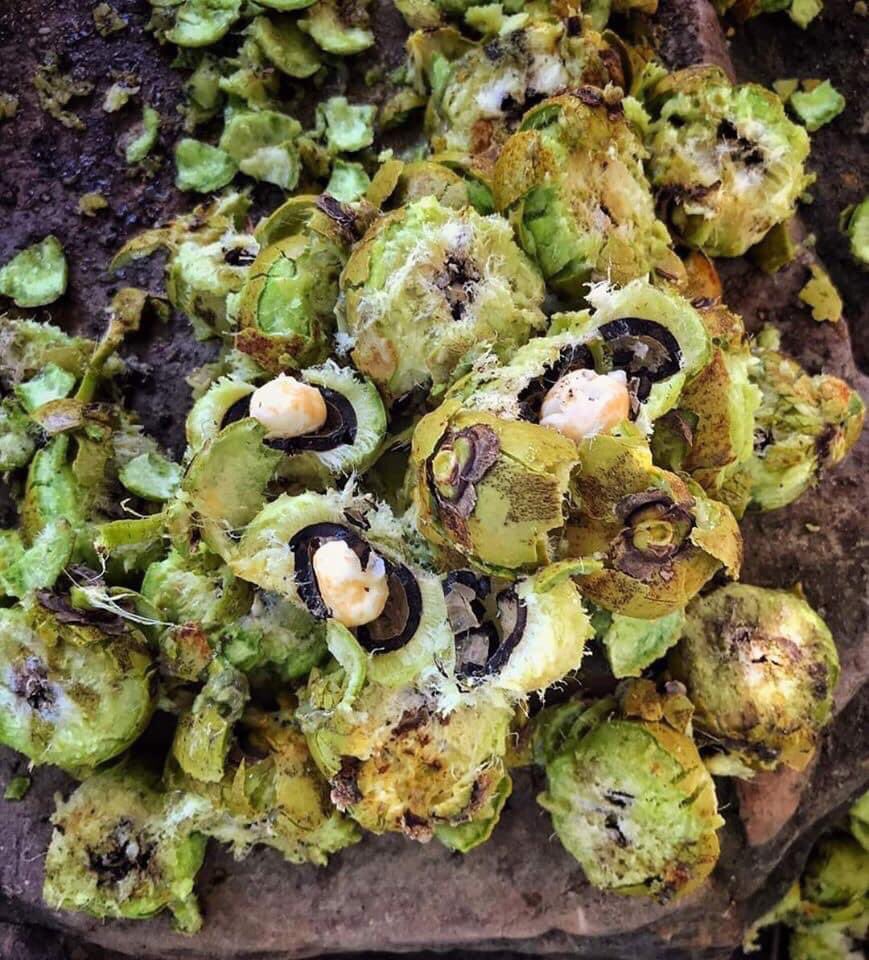
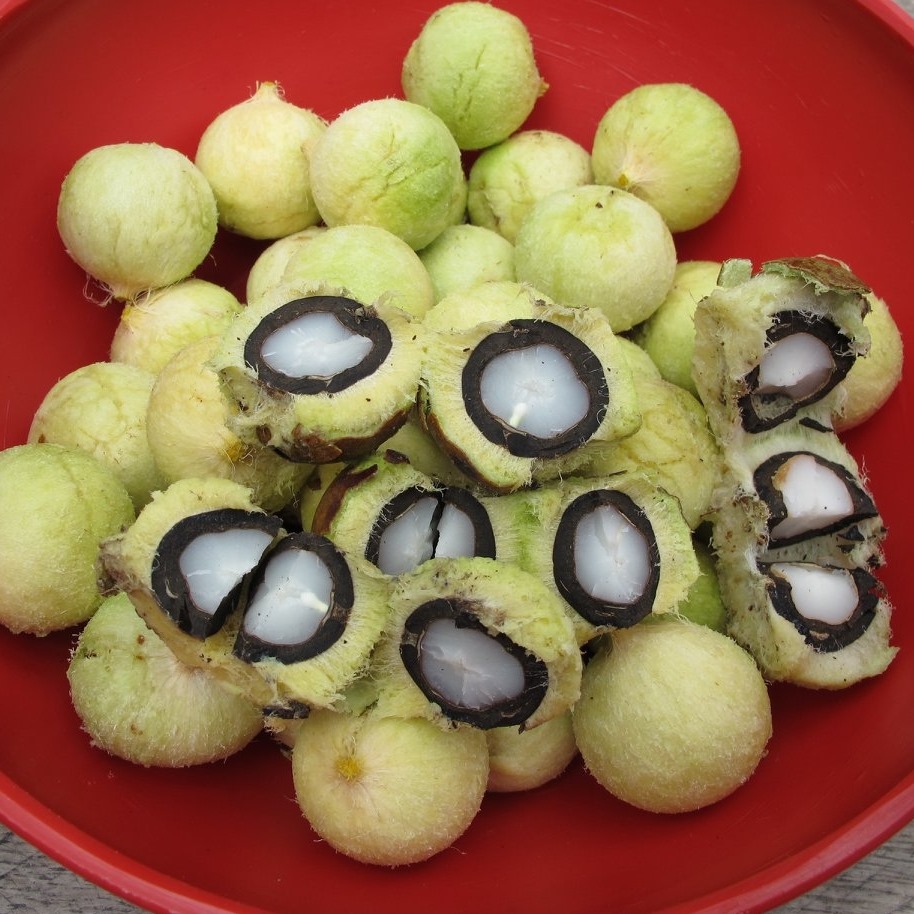
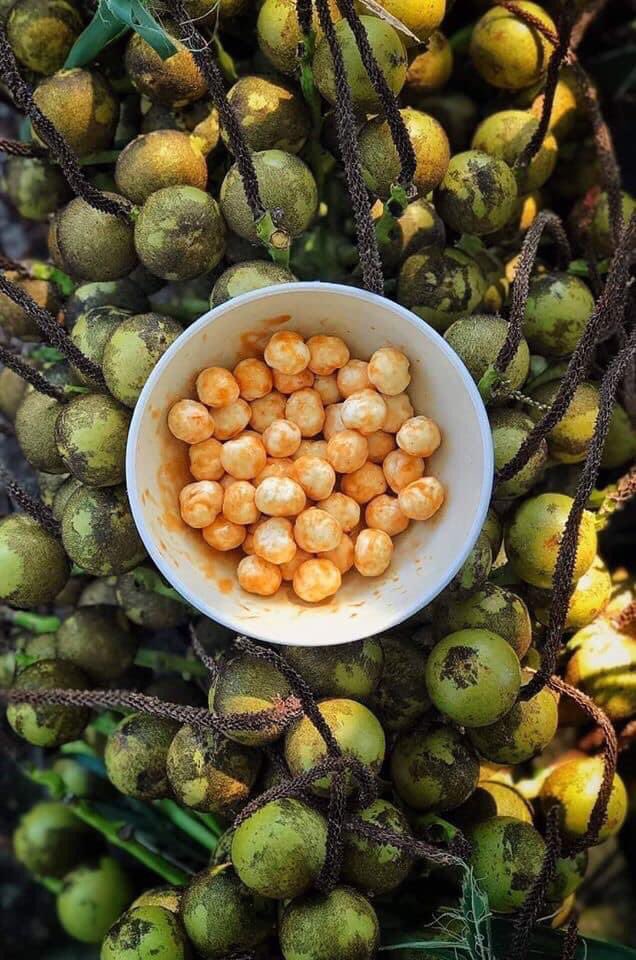
…or you could just buy them in a jar.
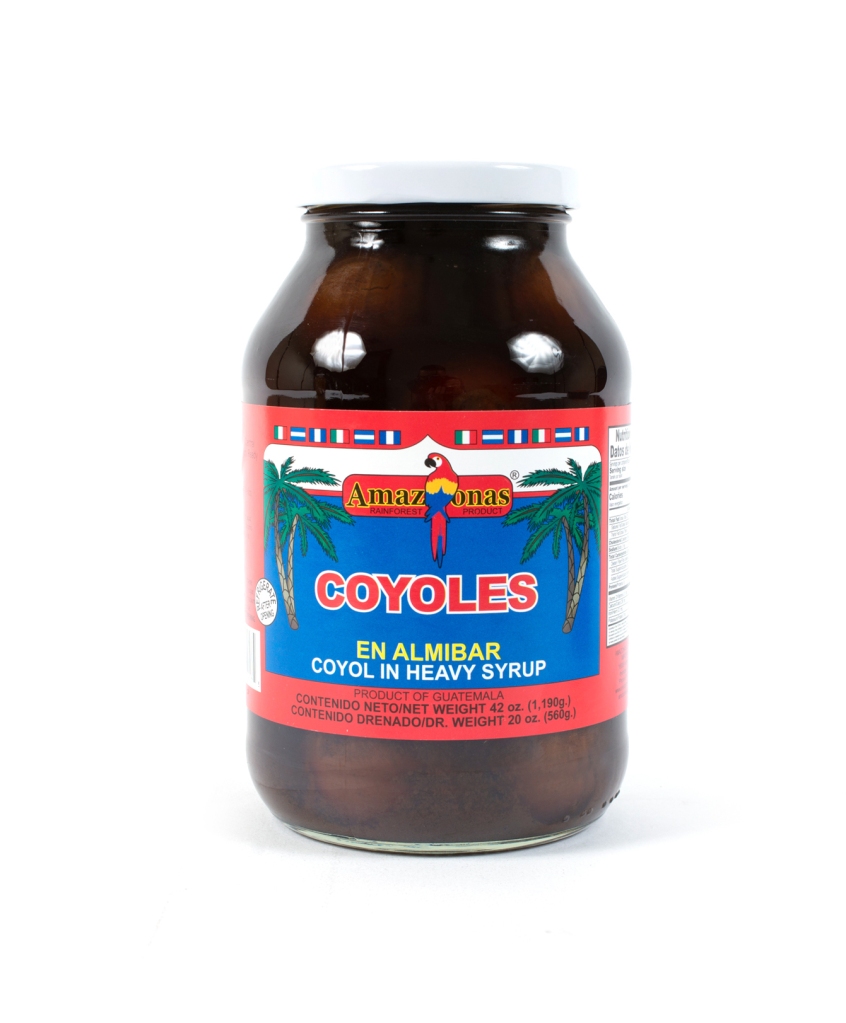
This ingredient is usually cooked as a sweet dish so I do find it unusual that its in a savoury dish with chiles, fish, and cilantro. Maybe it is the root vegetable after all. I’m still searching.
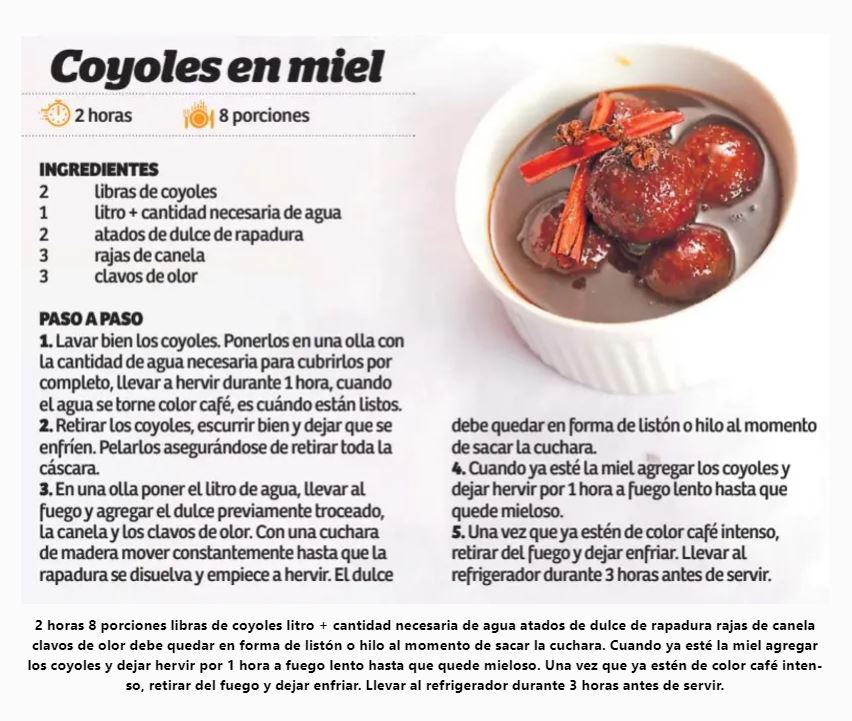
References
- Acevedo López y de la Cruz, Santos (2007) Xochimilco. Su historia. Sus leyendas. Ediciones Navarra/Patronato para el rescate del centro histórico de Xochimilco, A.C./Compañía Artística TLATEMOANI, México.
- Congreso de la Ciudad de México a, 22 de enero de 2021. : Oficio No. RSV/011/2021 : https://www.congresocdmx.gob.mx/media/documentos/6cd7fd00995a37608782b907ccddcae40b5554ed.pdf
- de la Rosa, Edmundo López. (2016) “Anales De Culhuacan.” Anales de Culhuacan
- Guillermo Sischo H. (2015) Vocabulario del Náhuatl de Michoacán : Bartholomew Collection of Unpublished Materials : SIL International – Mexico Branch : https://www.sil.org/system/files/reapdata/13/82/17/138217512519999721643234340964352242804/ncl_Diccionario.pdf
- Lockhart, james. (2001) Nahuatl as Written: Lessons in Older Written Nahuatl, with Copious Examples and Texts (Stanford: Stanford University Press and UCLA Latin American Studies, 2001)
- Zuart-Macías, J.L., Ponce-Díaz, P., Santiago-Marroquín, G. and Quiroga-Madrigal, R. (1999). COYOL PALM (ACROCOMIA MEXICANA), A PHYTOGENETIC RESOURCE FROM CHIAPAS, MEXICO. Acta Hortic. 486, 305-312
- DOI: 10.17660/ActaHortic.1999.486.45
Web links
- Aerial view of Tláhuac – By Gobierno CDMX – Tlahuac, CC0, https://commons.wikimedia.org/w/index.php?curid=75238570
- michin. – https://nahuatl.wired-humanities.org/content/michin
- Michmole Image – https://laroussecocina.mx/receta/michmole/
- MICHMOLLI – https://gdn.iib.unam.mx/diccionario/michmolli
- michmolli. – https://nahuatl.wired-humanities.org/content/michmolli
- Michmolli – https://en.wiktionary.org/wiki/michmolli
- Michmulli – https://en.wiktionary.org/wiki/michmulli
- Mixmole receta – https://coreculinario.com/blog/recetas/mixmole-mole-de-pescado-otros-nombres-michmole-michimolli/
- molli. – https://nahuatl.wired-humanities.org/content/molli
- View of the Xico mountain in Tláhuac – By Yavidaxiu – Own work, CC BY 3.0, https://commons.wikimedia.org/w/index.php?curid=9917911

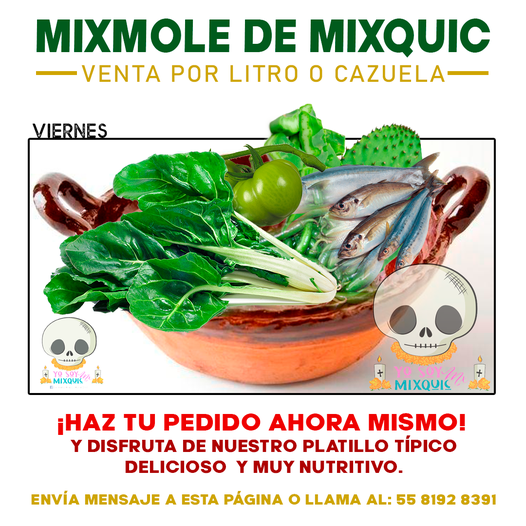
The first picture of coyola looks like a handful of Oca (Oxalis Tuberosa) Maybe it could be edible dahlia though?
LikeLike
My first thought was Oca too. I have briefly looked at the bulbous roots of some oxalis in Quelite Agrio : Other sour quelites but there are structural differences that lead me away from this identification. There are however likely dozens (if not hundreds) of regionally located plants that are probably not well catalogued so it can’t be dismissed. I am looking at various dahlias though so this is a credible claim. Muchas Gracias
LikeLike